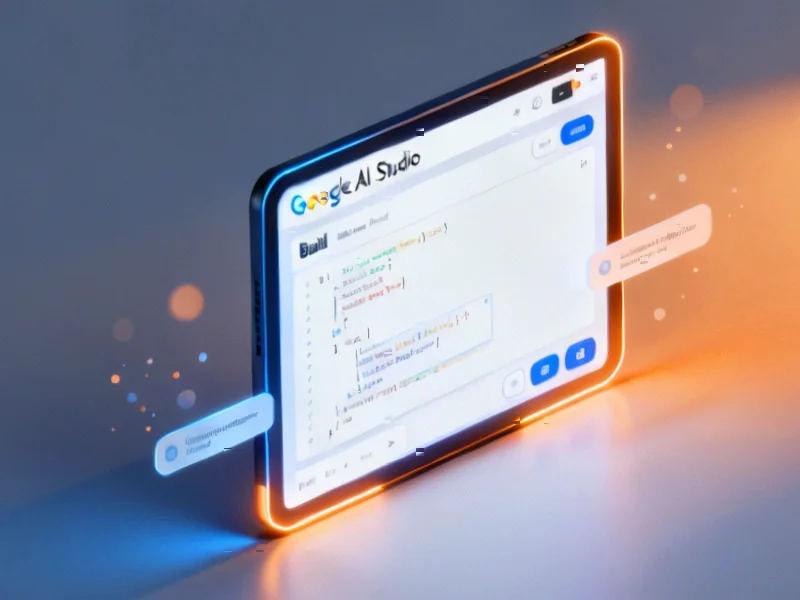Google’s Quantum Milestone: Beyond Theoretical Advantage
Google has announced a significant breakthrough in quantum computing that moves beyond theoretical demonstrations toward practical applications in drug discovery and materials science. The company’s Quantum AI research lab revealed what it calls the first algorithm with “verifiable quantum advantage” – a crucial step where quantum systems demonstrably outperform classical computers while producing results that can be independently confirmed.
Table of Contents
The Quantum Echoes Breakthrough
Published in the prestigious journal Nature, Google’s research centers on an algorithm called Quantum Echoes that simulates quantum mechanical behavior in natural systems. This represents a fundamental shift from previous quantum demonstrations that focused on artificial problems. The algorithm specifically models how atoms within molecules interact – a process fundamental to understanding chemical reactions and molecular properties.
The performance improvement is staggering: Google reports running the algorithm on its latest quantum chip produced results approximately 13,000 times faster than what would be possible using state-of-the-art classical supercomputers. More importantly, the company emphasized that these results are verifiable, meaning they can be replicated on separate quantum systems, addressing a key criticism of previous quantum advantage claims.
From Laboratory to Practical Application
While Google cautiously avoids claiming immediate practical applications, the research points toward tangible future uses. Charina Chou, Chief Operating Officer of Google’s Quantum AI Labs, explained that Quantum Echoes demonstrates techniques applicable across multiple quantum simulation systems. “This is a path to practical quantum advantage,” she noted, “something that would be not only better on a quantum computer, but useful.”
The company reinforced this potential with a second paper showing how their method could enhance nuclear magnetic resonance (NMR) techniques – already widely used in molecular research and drug development. Though this particular experiment didn’t achieve full quantum advantage due to the small system size, it demonstrates the approach’s relevance to existing scientific methodologies.
The Verification Challenge
Google has taken unprecedented steps to validate its claims, acknowledging the skepticism that has greeted previous quantum advantage announcements. The company conducted extensive “red-teaming” – assigning internal researchers to actively try to disprove their own results. This rigorous internal validation process, combined with Nature’s peer review, represents a more comprehensive verification approach than seen in earlier quantum computing announcements., as earlier coverage
Hartmut Neven, head of Google’s Quantum AI lab, described the work as “a milestone on the software track,” emphasizing that developing practical algorithms represents the next critical phase in quantum computing development. As more research focuses on creating usable software for quantum systems, demonstrations like Quantum Echoes provide crucial validation of the hardware’s potential.
The Evolving Quantum Landscape
The quantum computing field has witnessed multiple advantage claims in recent years, each met with varying degrees of scrutiny. Google’s own 2019 quantum supremacy announcement faced challenges when researchers demonstrated classical computing methods that could solve the same problem much faster than initially claimed. Other companies, including D-Wave and research collaborations like Quantinuum and University of Texas, have made similar claims, though each has faced questions about practical relevance.
IBM researchers recently predicted that quantum advantage claims will intensify through 2026, representing what they call “a pivotal threshold for the field.” However, they caution that consensus on true quantum advantage will likely require extensive debate and verification across the research community.
What This Means for Scientific Research
The implications for fields like pharmaceutical development and materials science could be profound. Quantum simulations of molecular interactions could potentially:
- Accelerate drug discovery by accurately modeling how potential drug compounds interact with biological targets
- Revolutionize materials design by simulating atomic-level properties of new materials
- Reduce research costs by replacing some laboratory experiments with accurate simulations
- Enable discoveries that are currently computationally impossible with classical systems
While practical applications remain on the horizon, Google’s verifiable quantum advantage represents a meaningful step toward making quantum computing’s long-promised benefits a reality. As the company continues to develop both hardware and software, the bridge between theoretical advantage and practical utility grows shorter, potentially transforming how we approach some of science’s most complex challenges.
Related Articles You May Find Interesting
- Modern Treasury Expands into Crypto with $40 Million Acquisition of Stablecoin F
- CoreWeave’s Strategic Stance: Core Scientific Deal Faces Shareholder Resistance
- AI-Powered Browsers Ignite New Era of Web Navigation Wars
- Airbnb CEO Brian Chesky has one question he likes to ask every entrepreneur: ‘Wh
- UK Banking Giants Retreat from Fiber Broadband Funding as Alternative Networks F
References & Further Reading
This article draws from multiple authoritative sources. For more information, please consult:
- https://www.hpcwire.com/2025/03/13/d-wave-reports-quantum-supremacy-stirs-immediate-challenge-and-rebuttal/
- https://www.ibm.com/quantum/blog/quantum-advantage-era
This article aggregates information from publicly available sources. All trademarks and copyrights belong to their respective owners.
Note: Featured image is for illustrative purposes only and does not represent any specific product, service, or entity mentioned in this article.



